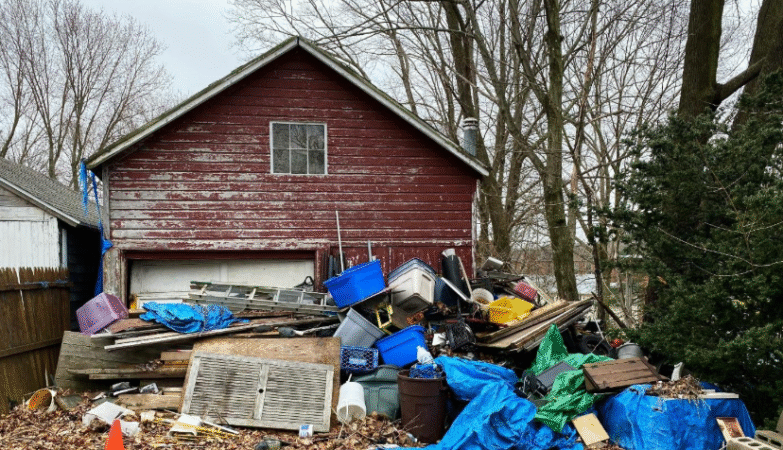As environmental awareness continues to rise, so does the need for versatile, efficient equipment that can tackle a variety of tasks associated with conservation and restoration projects. Among the most popular and adaptable pieces of machinery for these efforts is the skid steer. Compact, powerful, and highly maneuverable, skid steers are becoming the go-to choice for environmental projects ranging from land restoration to erosion control. In this blog, we’ll explore why more professionals and organizations are choosing to rent a skid steer for their environmental projects and how these machines are making a significant impact on the preservation and rehabilitation of natural landscapes.

1. Versatility and Adaptability of Skid Steers
One of the primary reasons skid steers are so popular in environmental projects is their incredible versatility. These compact machines can be outfitted with a wide range of attachments, allowing them to perform multiple tasks that would otherwise require several different types of equipment.
Multiple Attachments for Varied Tasks
Skid steers are designed to accommodate a variety of attachments, making them capable of handling diverse tasks, including:
- Land Clearing: Attachments like mulchers, brush cutters, and stump grinders make skid steers ideal for clearing vegetation, removing invasive species, and preparing land for reforestation or other environmental efforts.
- Grading and Earthmoving: With attachments like buckets, graders, and rakes, skid steers can efficiently move soil, level ground, and prepare sites for planting or construction of erosion control structures.
- Material Handling: For projects that involve transporting materials like rocks, soil, or vegetation, skid steers equipped with forks or grapples can easily move these heavy loads across challenging terrain.
This adaptability makes renting a skid steer a cost-effective solution for environmental projects, as a single machine can be used for multiple phases of a project, reducing the need to rent additional equipment.
Compact Design for Hard-to-Reach Areas
The compact size of skid steers allows them to access areas that larger equipment simply cannot reach. This is particularly valuable in environmental projects where work often takes place in sensitive or confined spaces, such as wetlands, forests, or along riverbanks.
- Navigating Rough Terrain: Skid steers are designed to operate on rough and uneven terrain, making them perfect for projects in remote or undeveloped areas.
- Minimizing Environmental Impact: The ability of skid steers to maneuver in tight spaces means they can perform necessary tasks with minimal disruption to the surrounding environment, helping to preserve the integrity of the area being restored.
2. Cost-Effectiveness of Renting Skid Steers
Another key factor driving the popularity of skid steers in environmental projects is the cost-effectiveness of renting them. For many organizations, particularly non-profits or government agencies working on conservation efforts, budget constraints are a significant concern. Renting a skid steer provides a flexible and affordable solution.
Lower Initial Costs
Purchasing heavy equipment like skid steers can be a significant investment, especially for organizations that only need the equipment for specific projects or limited periods. Renting allows these organizations to access the machinery they need without the large upfront costs associated with buying.
- Flexible Rental Terms: Rental companies often offer flexible terms, allowing organizations to rent a skid steer for as long as needed—whether it’s for a few days, weeks, or even months. This flexibility ensures that costs align with the project’s timeline and budget.
- Avoiding Maintenance Expenses: When you rent a skid steer, the rental company typically handles all maintenance and repairs. This eliminates the need for organizations to invest in maintenance staff, spare parts, or repair services, further reducing costs.
Access to the Latest Equipment
By choosing to rent rather than buy, organizations can also access the latest skid steer models equipped with advanced features and technologies. This ensures that they are using the most efficient and environmentally friendly equipment available, which can be particularly important in projects focused on sustainability.
- Advanced Technology: Newer skid steer models often come with features like improved fuel efficiency, lower emissions, and enhanced operator controls, making them better suited for environmental work.
- Availability of Specialized Attachments: Rental companies often stock a wide range of attachments, allowing organizations to select the best tools for their specific project needs without having to invest in purchasing them.
3. Applications of Skid Steers in Environmental Projects
The growing popularity of renting skid steers is also driven by the wide range of environmental projects they can support. From restoring natural habitats to building sustainable infrastructure, skid steers play a crucial role in various conservation efforts.
Land Restoration and Reforestation
Land restoration and reforestation projects often involve clearing non-native vegetation, preparing the soil, and planting trees or other native species. Skid steers are perfectly suited for these tasks due to their ability to handle a variety of attachments and their maneuverability in forested areas.
- Clearing Invasive Species: Skid steers equipped with brush cutters or mulchers can efficiently remove invasive plant species that threaten native ecosystems, allowing for the reintroduction of indigenous flora.
- Soil Preparation: Preparing the soil for planting is a critical step in reforestation efforts. Skid steers can be outfitted with attachments like soil conditioners or rotary tillers to break up compacted soil, making it more suitable for new growth.
Erosion Control and Water Management
Skid steers are also invaluable in projects aimed at controlling erosion and managing water resources. Their ability to perform precise grading and earthmoving tasks makes them ideal for shaping landscapes to prevent soil erosion and improve water retention.
- Building Erosion Control Structures: Skid steers can be used to build terraces, swales, and other erosion control structures that help stabilize soil and reduce runoff. These structures are essential in preventing further degradation of vulnerable landscapes.
- Wetland Restoration: Wetland restoration projects often require careful grading to ensure proper water flow and retention. Skid steers can perform these tasks with precision, helping to restore the natural hydrology of wetland areas.
Urban Greening and Sustainable Infrastructure
In urban environments, skid steers are increasingly being used in projects focused on greening cities and building sustainable infrastructure. These initiatives include creating green spaces, constructing rain gardens, and installing permeable pavements.
- Urban Landscaping: Skid steers are ideal for urban landscaping projects that involve planting trees, shrubs, and other vegetation in confined spaces. Their compact size allows them to navigate tight urban areas while performing the necessary earthmoving and planting tasks.
- Sustainable Infrastructure: As cities look to reduce their environmental impact, skid steers are being used to build green infrastructure like rain gardens and permeable pavements, which help manage stormwater and reduce urban heat islands.
4. Environmental Benefits of Using Skid Steers
Beyond their versatility and cost-effectiveness, skid steers offer several environmental benefits that make them particularly well-suited for conservation projects.
Reduced Emissions and Fuel Efficiency
Modern skid steers are designed to be more fuel-efficient and produce fewer emissions than older models. This is crucial in environmental projects, where minimizing the carbon footprint is often a priority.
- Lower Emissions: Many newer skid steer models meet or exceed EPA emissions standards, making them a cleaner option for sensitive environmental work.
- Fuel Efficiency: Improved engine designs and hydraulic systems allow skid steers to operate more efficiently, reducing fuel consumption and associated emissions.
Minimizing Soil Disturbance
The compact size and maneuverability of skid steers mean they can perform necessary tasks with minimal soil disturbance. This is particularly important in projects focused on habitat restoration, where preserving the integrity of the soil is essential.
- Precision Work: Skid steers can perform precise grading and earthmoving tasks, reducing the risk of soil compaction and erosion.
- Low Impact: The ability to navigate rough terrain without causing excessive damage to the landscape makes skid steers ideal for environmentally sensitive areas.
Conclusion
As the demand for environmental conservation and restoration projects continues to grow, so too does the popularity of renting skid steers. Their versatility, cost-effectiveness, and environmental benefits make them an essential tool for organizations and professionals working to preserve and restore natural landscapes.
Whether you’re involved in reforestation, erosion control, or urban greening, renting a skid steer can provide the flexibility and capability needed to complete your project successfully. As more projects focus on sustainability and environmental impact, the role of skid steers in these efforts is likely to expand, further solidifying their place as a critical component of modern conservation work.







